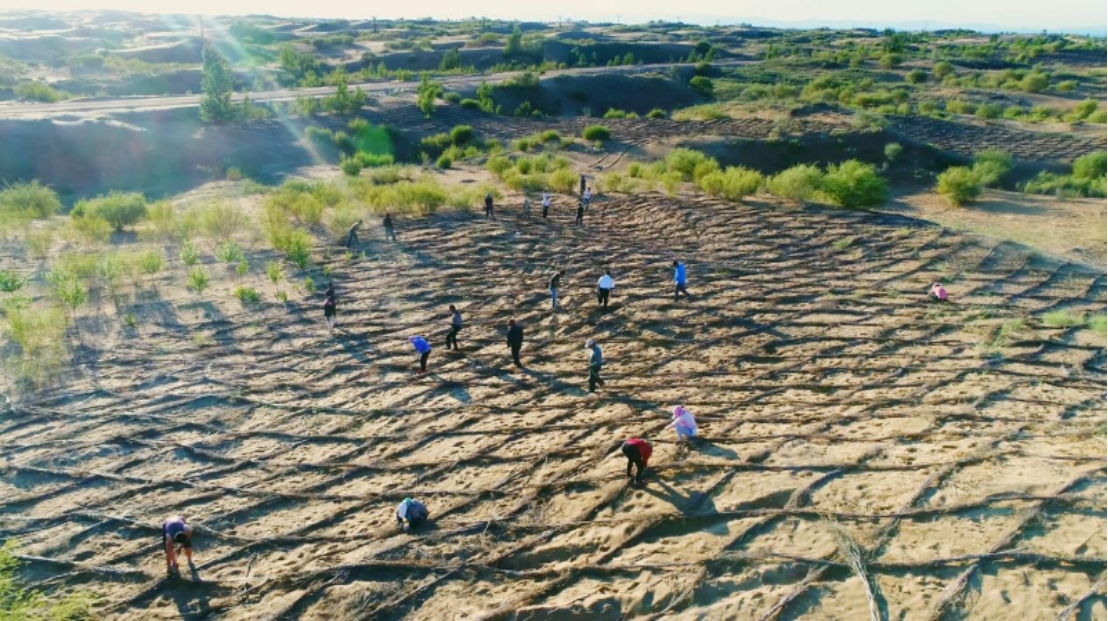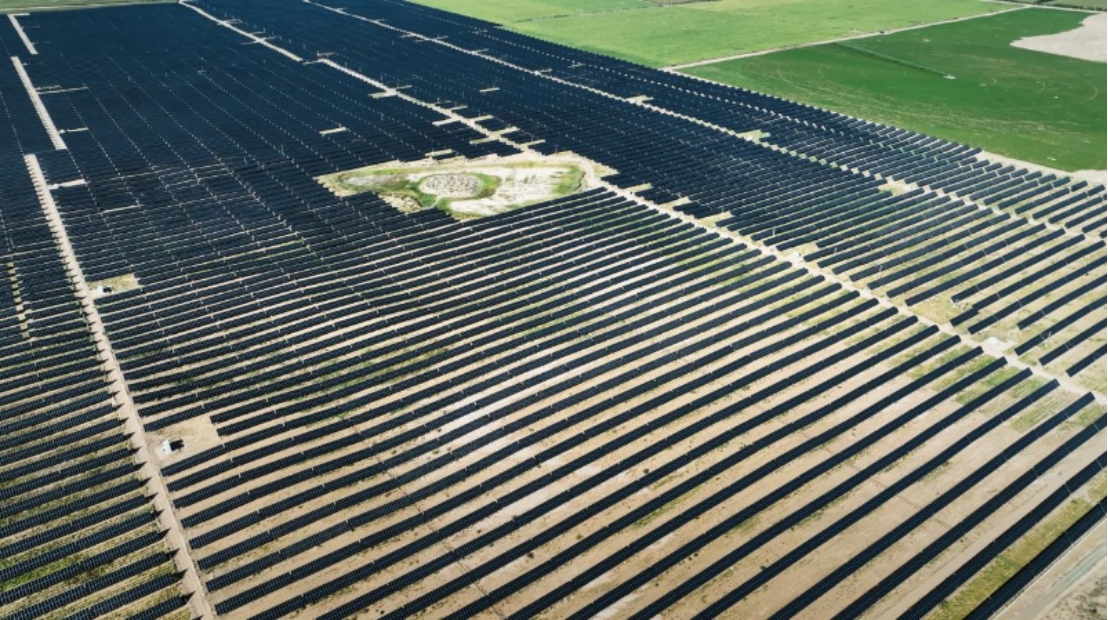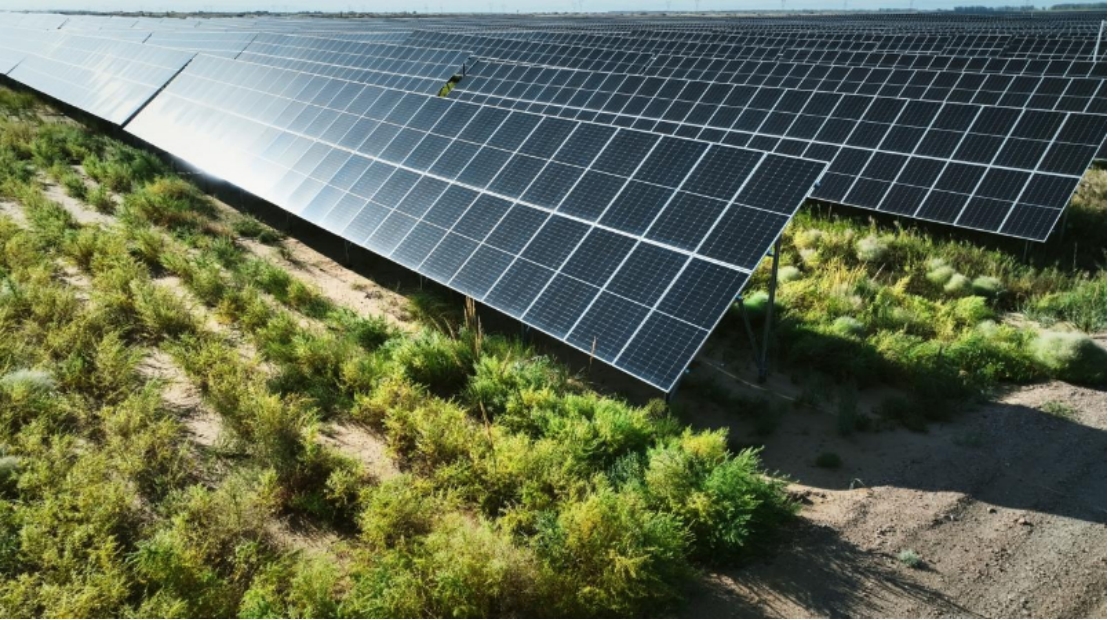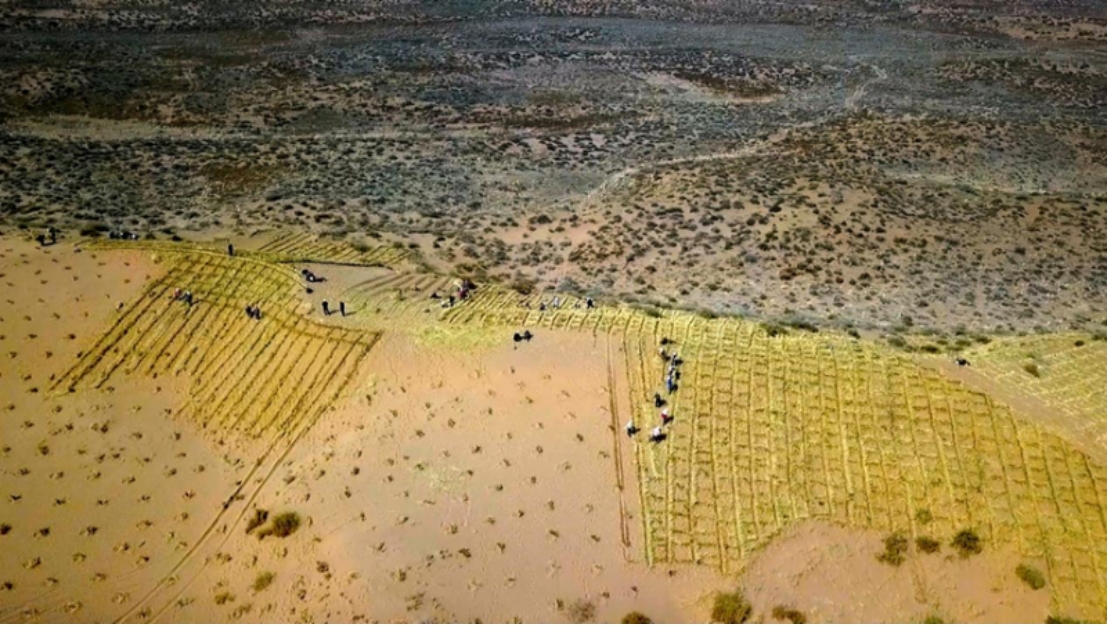
March 12, 2024 marks the 46th Arbor Day in China. According to the China Land Greening Status Bulletin released by the National Greening Committee Office, China completed afforestation of 59.97 million mu, grassland improvement of 65.685 million mu, and land reclamation from desertification of 28.575 million mu in 2023.
The Ulan Buh Desert in Dengkou County, Bayannur, Inner Mongolia, is one of China's eight major deserts. In Mongolian, Ulan Buh means "red bull".
Once, this red bull “rampaged” brutally, gnawing at farmland, destroying houses, and causing sandstorms...
To tame this red bull, generations of desert control workers marched into Ulan Buh. Today, the sand hazard was turned into “golden wealth”, forming the “Dengkou County Model” for desert prevention and control.


From Sand Sea to Blue Sea, Desert to Oasis
The Yellow River flows from west to east into Inner Mongolia. with the Ulan Buh Desert located near this geographical landmark. As the main battlefield and frontline for the Yellow River "Ji Zi Bend" campaign and desertification control, an ecological control campaign using photovoltaic technology as a means has been fully launched in Dengkou.
On the undulating sand dunes, neatly arranged blue photovoltaic panels create a vast "blue sea."
As one of the regions with the richest solar resources in the country, the Ulan Buh Desert enjoys abundant sunlight, providing unique conditions for the development of the photovoltaic industry. Since 2000, Bayannur has been vigorously promoting the ecological control project of the Ulan Buh Desert, implementing multiple measures for prevention, control, and utilization, and launching a vigorous desert ecological protection plan. In 2010, Bayannur officially began to explore a new model of photovoltaic desert control, and the Guohua Dengkou 100-megawatt photovoltaic desert control and energy storage bidding project emerged under this background.

This 100-megawatt photovoltaic desert control power station is Bayannur's first 100,000-kilowatt photovoltaic + ecological control power station. The photovoltaic area of the project covers an area of 3,000 mu, greening 1,600 mu of desert land. It was invested and developed by the State Energy Group, commenced construction in November 2020, and was fully connected to the grid for power generation in June 2021. It exclusively uses LONGi Green Energy Hi-MO 5 double-sided dual-glass modules. The project can restore and control 3,000 mu of desert, provide approximately 200 million kilowatt-hours of green electricity to the grid annually, save an average of 62,000 tons of standard coal consumption annually, and significantly reduce carbon dioxide emissions and dust emissions.
"According to the regional characteristics, we have planted crops such as honeysuckle, oil peony, and alfalfa between the panels, which not only serve to prevent wind and fix sand but also bring economic benefits," said the station manager of the Guohua Dengkou 100MW Desert North Light Storage Project area photovoltaic power station.
The Ulan Buh Desert is one of the most severely desertified areas in China, with 4.269 million mu located in Dengkou County, Bayannur City, Inner Mongolia, accounting for approximately 77% of the total land area of the county. How to achieve both adapting to local conditions and effectively prevent and control desertification, while also generating electricity effectively and bringing social and economic benefits, is a difficult problem facing project developers.


In order to beautify the desert, prevent sandstorms, and at the same time, effectively maximize the benefits of the land, the State Energy Group has fully utilized the wind and sand barriers, sand barriers, rainwater collection, and thermal balance effects of the photovoltaic panels in the power generation field, combined with the patterns of desert control, sand prevention, greening, and economic crop planting to achieve a win-win situation for economic and ecological benefits.
At the same time, drawing on the experience of local forestry and grassland departments and related scientific research units in desert control, efficient and three-dimensional sand control barriers are planned to create a desert control demonstration area, striving to achieve multi-purpose land use and green circular development.
In recent years, Dengkou County has vigorously developed "photovoltaic + desert + agriculture" and "photovoltaic + desert + forestry and grass" and other "new energy +" ecological control models, actively creating a million-kilowatt-level photovoltaic energy base in Ulan Buh Desert, Dengkou County, and opening up a new path for the ecological photovoltaic desert control mode in Ulan Buh. In 2021, Dengkou County became a national comprehensive demonstration zone for desertification control, providing replicable and scalable "Bayannur experience" for desertification control nationwide. In July 2023, the "Decision of the Inner Mongolia Autonomous Region Party Committee on Building a Model Autonomous Region in All Aspects" proposed "to adhere to scientific desert control and promote Dengkou model and photovoltaic desert control model and other control models".
The photovoltaic panels on the Ulan Buh Desert have opened up a new path for scientific desert control.
This year's government work report clearly states the need to strengthen ecological civilization construction and promote green and low-carbon development. Deeply implementing the concept that green waters and mountains are golden and silver mountains, promoting coordinated efforts in carbon reduction, pollution reduction, afforestation, and growth, and building a beautiful China where man and nature live in harmony.
Among these efforts, new productive forces represented by photovoltaic technology have the inherent characteristics of protecting the ecological environment and promoting harmonious coexistence between man and nature. They conform to the concept of green development, can provide strong technical support and impetus for green development, and are also an important "brush" for painting a beautiful ecological picture.
Fighting against sandstorms and combating desertification, rows of photovoltaic arrays have brought infinite vitality to once the most barren desert and sand dunes. For photovoltaic technology enterprises, Ulan Buh and Kubuqi are far from the end.
According to statistics from the United Nations Environment Programme (UNEP), regions already affected by desertification or expected to be affected account for 35% of the global land area. This is like a Damocles sword hanging over the heads of villagers in the global village all day long. Only by taking more practical actions can we bring more hope and possibilities for desertification control.